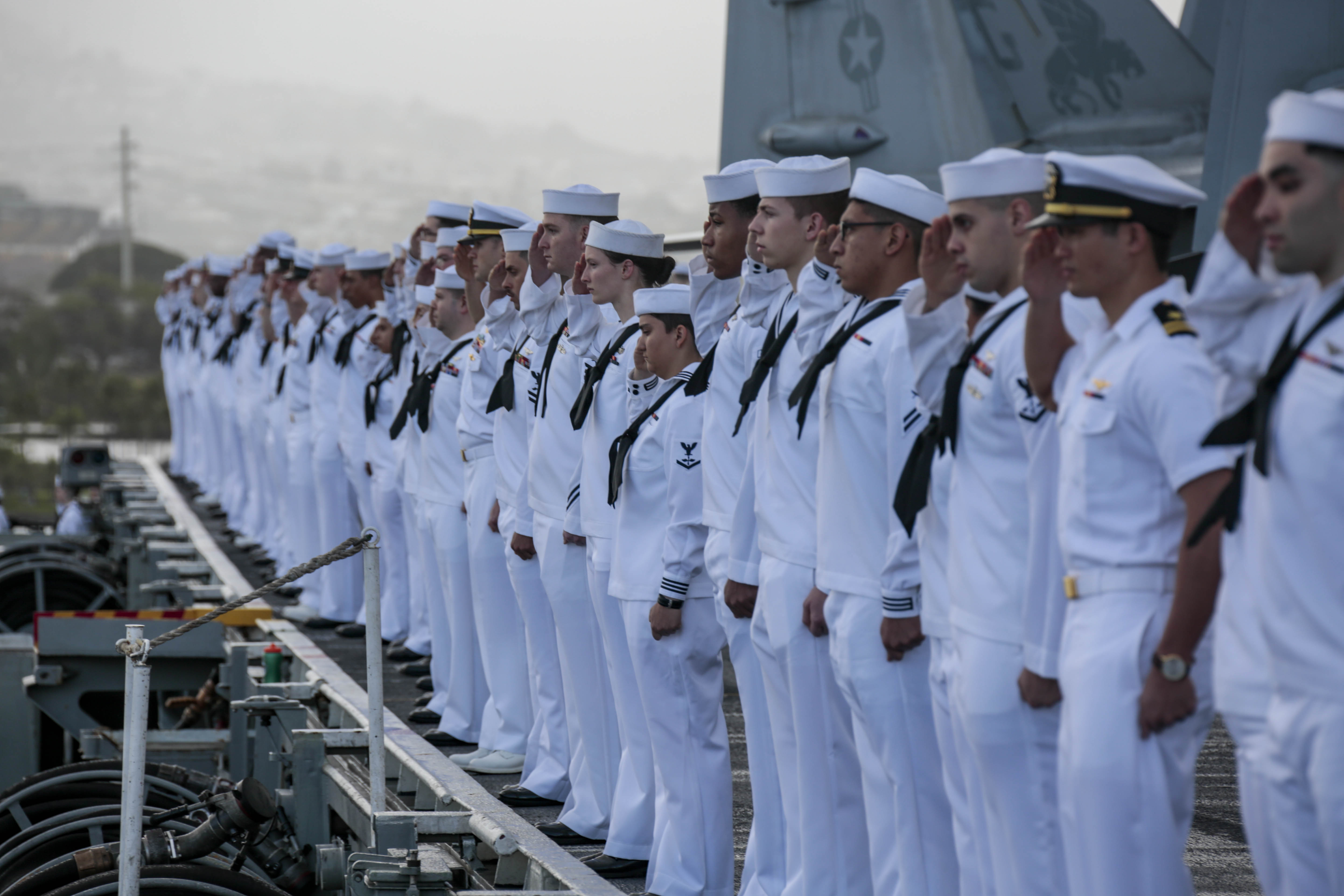
The Navy is working through a backlog of about 42,000 sailors and their families who have been in stuck in place after the end of a stop-movement order that froze the permanent change of station process for sailors, Chief of Naval Personnel Vice Adm. John Nowell told reporters on Thursday.
The stop-movement order that Secretary of Defense Mark Esper made in March to protect military families from the COVID-19 pandemic was lifted earlier this month. Last week, the Navy issued two sets of directions for how moves would resume for the service. Now, with the new rules in place, the service will start eating away at the backlog.
“We had about a five-month gap when you look at the normal scale of moves that you conduct during this time of the year,” Nowell said. “That’s about 42,000 sailors. We will spread out [moves] across the rest of calendar year ’20, and then we will catch up to that back log in early ’21.”
The early focus will be on critical billets like strategic forces, forward-deployed naval forces, special operations and sailors assigned to units preparing to deploy within the next year, according to the NAVADMIN message.
Navy personnel command “must preserve the readiness of the fleet by ensuring that PCS moves are executed to maintain manning at key commands. This will result in changes to tour lengths as we move sailors to sea duty early and hold sailors on sea duty beyond their [expected departure date],” reads the message.
Part of the changes will extend certain sailors in their current jobs until their relief is on station.
“We are requiring face-to-face reliefs in some of these operational sea duty billets, and we know that comes at a cost to sailors and their families,” Nowell said.
Depending on the job, that could mean up to a six-month extension on their orders, Nowell said. That could result in a one-time $500-a-month bonus for sailors subject to the extension.
“When you look at our sea-going commands, a big portion of the billets are these apprentice-level sailors,” Nowell said.
“We had put incentives out for folks to extend their time in service in our supply chain.”
The service will also be encouraging sailors to undertake do-it-your-self moves, given the backlog of PCS and the limited availability of moving contractor.
Once at the new duty station, sailors may have to remain in place for a 14-day restriction of movement period, depending on the circumstances.
For example, a move from Washington, D.C., to another spot on the East Coast that could be accomplished in a one-day drive might not require a ROM period. A cross-country move via airplane would likely require the 14-day isolation period. International moves will be subject to the rules of the country.
“Service members, we can order them to do quarantine” Nowell said. “Family members, we can highly encourage.”
On the new sailor production side, the service has put in place measures to keep the COVID-19 from the Navy’s Recruit Training Command.
“We did have to take a three-week shipping pause at RTC after we got our first COVID case to keep our recruits safe,” Nowell said.
Since the command reopened, the Navy has moved 15,000 recruits through recruit training at Great Lakes.
For more information on Navy PCS moves this year, visit MyNavy portal or call 1-833-330-6622.





